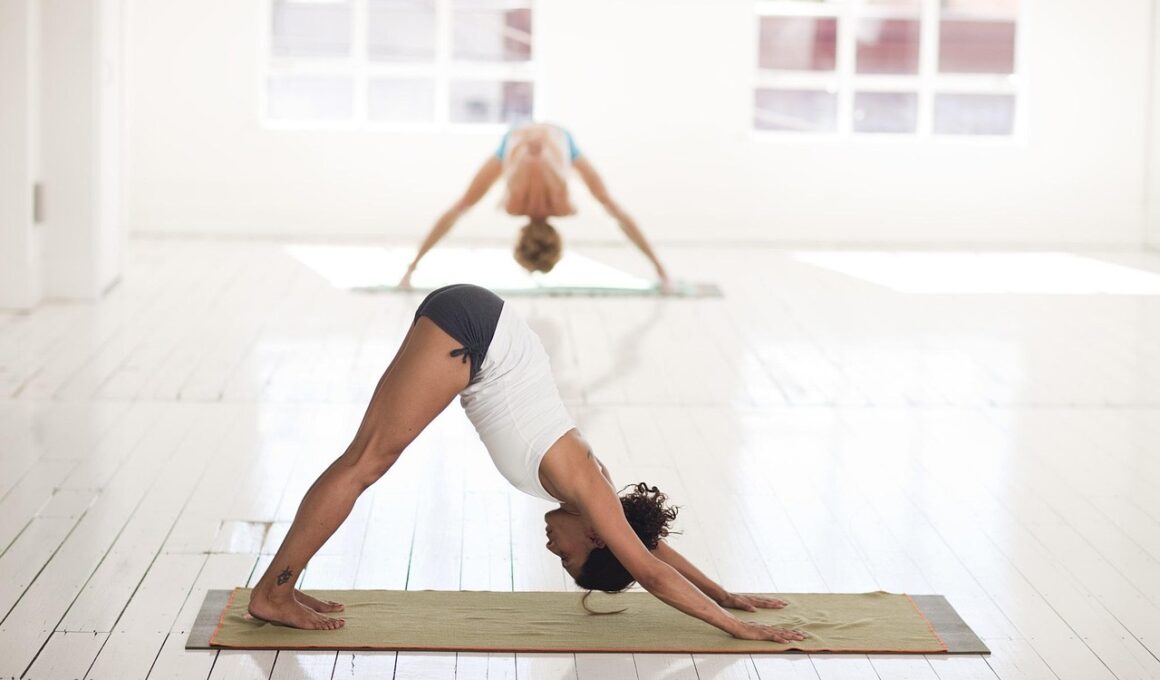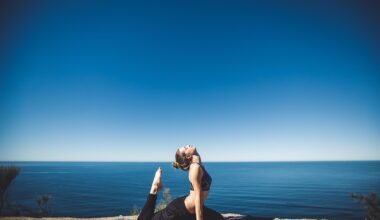Top 10 Stretching Exercises for Improved Flexibility and Mobility
Improving flexibility and mobility is essential for overall physical health and performance. Stretching is an effective way to increase both, enhancing athletic performance and reducing injury risk. This article presents ten great stretching exercises. They are easy to perform in various fitness settings, making them accessible to anyone. First, always warm up your muscles for about five to ten minutes before you begin stretching. This preparation process benefits your body by preventing injuries and increasing workout efficiency. Stretching should be done slowly and should not provoke pain. It is important to listen to your body, and if something feels off, stop immediately. Hold each stretch for about 15 to 30 seconds, allowing your muscles to lengthen properly. Many individuals find significant improvement in their flexibility after consistent stretching routines. You can increase the duration as you progress, but maintain focus on proper form and breathing during each stretch. With dedication, these exercises can lead you to improve your daily activities and engage more comfortably in various sports and recreational activities, enhancing quality of life.
1. Standing Hamstring Stretch
Your hamstrings are vital muscles that often become tight due to long periods of sitting or inactivity. The standing hamstring stretch targets these muscles effectively. Begin by standing with your feet hip-width apart. Bend at your hips and lower your upper body toward the floor while keeping your back straight. You can either reach for your toes or place your hands on your thighs. Ensure your knees remain slightly bent to prevent overexertion. Hold this position for around 20 to 30 seconds, feeling a gentle stretch in your hamstring and lower back. Keep your head between your arms and breathe deeply. For those more flexible, consider trying to touch the ground with your palms. This stretch improves flexibility within your lower body, preventing injuries during physical activities. To enhance effectiveness, add slight movement from side to side, focusing on one leg at a time. This can help to isolate the stretch and address any tight areas within your hamstrings. Consistent practice will yield better results, helping enhance overall mobility in your daily movements.
The quadriceps are another crucial muscle group, and they can become tight, especially from prolonged sitting or intense workouts. A proper stretch helps maintain flexibility and strength. For the standing quadriceps stretch, start by standing upright with your feet together. Gradually bend one knee, bringing your heel toward your glutes. With your hand, grab your ankle, and push your hips forward, keeping your knees together as you pull your leg closer to your body. Hold this position for 20 to 30 seconds while maintaining a neutral spine and engaging your core. Focus on your breathing and try to relax into the stretch. Switch sides, repeating the process on your other leg. For added balance, feel free to hold onto a wall or sturdy surface. This stretch effectively stretches the quadriceps while also engaging your stabilizing muscles, enhancing your overall balance. Including this in your routine can significantly enhance your performance in activities requiring powerful leg movements, such as running or jumping. Remember to maintain proper posture to optimize results without discomfort.
3. Lunge Stretch
The lunge stretch is versatile, targeting the hips, groin, and quads simultaneously while enhancing overall flexibility. Start by standing tall with your feet together. Step forward with your right foot into a lunge position while lowering your hips. Ensure your right knee stays directly above your ankle, avoiding strain. Your left leg should stretch behind you, with the left knee hovering off the ground. Keep your torso upright and engage your core. Hold this position for about 20 to 30 seconds, feeling the stretch in your hip flexors and quadriceps. Switch sides and repeat the lunge on your left leg. To deepen the stretch, consider raising your arms overhead as you lunge, creating an extended stretch throughout your entire body. An even more advanced level is to rotate your torso toward your front knee while keeping your arms raised, engaging your core even further. Incorporating lunges into your routine not only improves flexibility but also builds strength in your lower body, enhancing performance in various sports and physical activities while reducing injury risks.
Low back tension is often a common complaint among many individuals, impacting overall mobility. One effective stretch targeting the lower back is the seated spinal twist. Start by sitting on the floor with your legs extended in front of you. Bend your right knee, placing your right foot on the outside of your left thigh near your knee. Place your left arm on the right knee, and gently twist your torso toward the right side. Engage your core to maintain balance while keeping a long spine, and hold this twist for 20 to 30 seconds. Make sure your neck is relaxed, avoiding any strain when looking behind you. Switch to the other side to stretch effectively. This exercise not only improves spinal flexibility but also aids in digestion and promotes relaxation. Incorporate this stretch into your routine to combat stiffness from prolonged sitting. As your flexibility increases, you may find it easier to perform other exercises and daily tasks. Combine this stretch with proper breathing techniques to allow muscle relaxation, enhancing the overall benefits during each session.
5. Butterfly Stretch
The butterfly stretch is ideal for opening the hips and improving flexibility in the groin area. Begin by sitting on the floor with your back straight. Bring the soles of your feet together, allowing your knees to fall outward. Grasp your feet with your hands and gently pull them towards your body, while you lean forward at your hips. Focus on keeping your back straight and breathing deeply. Hold this stretch for 20 to 30 seconds, feeling the deep stretch in your inner thighs and hips. If you’re more flexible, you can apply gentle pressure to the knees with your elbows to deepen the stretch. However, avoid pushing to the point of discomfort. This stretch is valuable for athletes involved in sports like soccer or dance, where hip mobility is crucial. Also, use this exercise to alleviate tension accumulated in a sedentary lifestyle and to counteract the effects of tight hip muscles. Regular practice will yield better results in flexibility and movement efficiency, significantly enhancing your physical performance.
The shoulder area often holds tension, making it essential to incorporate stretches targeting these muscles. The cross-body shoulder stretch specifically targets the shoulders to help relieve tightness and improve flexibility. Stand tall or sit comfortably, then extend your right arm across your body at shoulder height. Utilize your left arm to gently press the right arm towards your chest. Hold this stretch for 20 to 30 seconds, ensuring your shoulder remains relaxed while keeping your head and neck aligned. Switching sides, repeat the process with your left arm. To deepen the stretch, you can bring your arm slightly higher or lower, finding the position that feels the best for you. This exercise is vital for anyone who works long hours at a desk or conducts repetitive arm movements. Regularly incorporating this stretch into your routine can help reduce the risk of shoulder injuries and tension headaches, improving your overall posture and mobility. Combining this stretch with deep breathing will additionally aid in muscle relaxation, enhancing the benefits within your routine.
7. Cat-Cow Stretch
The cat-cow stretch is a well-known exercise that enhances flexibility in the spine while promoting overall muscle relaxation. Begin by getting onto all fours on the floor. Ensure your wrists are directly beneath your shoulders, and your knees are aligned with your hips. Start by arching your back upward, tucking your chin toward your chest in the cat position. Hold this posture for a few seconds before transitioning into the cow pose. To achieve that, drop your belly toward the floor while lifting your head and tailbone upward, creating an arch in your back as you inhale deeply. Continue alternating between these two positions for 20 to 30 seconds. This flowing motion increases flexibility in the spine, relieving tension built up in the back. This exercise is beneficial for people who sit for prolonged periods or engage in high-impact physical activities, as it counteracts spinal stiffness. Regular practice can lead to improved posture and comfort during daily activities. Make sure to concentrate on your breath as you flow between positions, enhancing relaxation and overall effectiveness.


